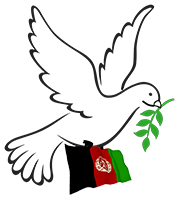The partial recovery, coupled with falling food prices, has contributed to a gradual improvement in household welfare. But most Afghan households continue to struggle to meet basic needs and poverty remains widespread. Vulnerable groups, including women, children, and displaced populations, continue to bear the brunt of the economic hardship, due to the lack of social protection mechanisms. Night-time lights data analysis further indicates the uneven nature of economic recovery and the evolving landscape of economic activity in the country. In 2021, provinces whose economy was more heavily reliant on foreign aid and security spending —particularly Kabul and the southern provinces of Kandahar, Helmand, and Zabul—experienced the sharpest declines in economic activity compared to 2020. Similarly, by 2023, the level of economic activity captured by civilian night-time lights remains sizably below its 2020 baseline in Parwan, Kapisa, Zabul and, notably, in Kabul.
Afghanistan’s trade dynamics remain a significant challenge. In 2023-24, the country’s exports remained stable, but imports surged, leading to a widening trade deficit. However, the appreciation of the Afghani made imports cheaper, fueling demand for foreign goods, while domestic industrial activity revived, increasing the need for imported inputs. The trade deficit, exacerbated by Afghanistan’s reliance on imports for essential goods like fuel, food, and machinery, might pose a risk to the country’s economic stability.
The Afghanistan Development Update is part of the World Bank’s Afghanistan Futures program, which includes research, monitoring, and analytical reports on the Afghan economy and society. The program aims to support evidence-based policymaking and inform the international community on the economic developments in Afghanistan.
 Afghanistan Peace Campaign
Afghanistan Peace Campaign